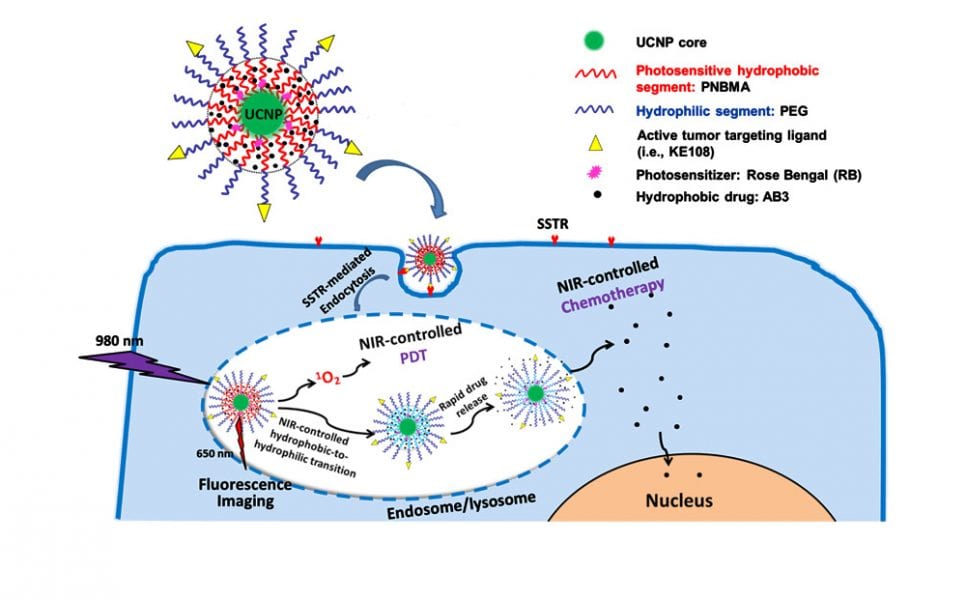Developing effective therapeutics for cancer is certainly not the easiest field of drug development, as the drugs have to meet several, often contradictory requirements. i) In order to minimize negative effects on the patient’s health the highly toxic therapeutics have to be delivered exclusively to cancer cells. ii) As tumor cells are fast in developing drug resistances, it is desired to combine several drugs with distinct modes of action for maximized effect. iii) And lastly, sensitive and specific diagnostics are needed to allow for determination of therapy success. These requirements are especially important for the treatment of neuroendocrine tumors. Such slow growing tumors are often metastatic at discovery, a stage of cancer that is extremely life-threatening but cannot be treated by surgery.
In a recent Communication in Advanced Functional Materials, Herbert Chen from the University of Alabama, Shaoqin Gong from the University of Wisconsin and their co-workers developed upconversion nanoparticle-based micelles for neuroendocrine tumor theranostics that meet the above requirements.
The researchers functionalized individual upconversion nanoparticles with light-sensitive amphiphilic block copolymers in order to form degradable micelles, and a photosensitizer. The hydrophobic micelles can be loaded with a histone deacetylase inhibitor, thereby providing one therapeutic option. IR irradiation of the nanoparticle core allows for photothermal therapy, a second therapeutic approach. Lastly, functionalization of the particles with a peptide allows for specific targeting of neuroendocrine tumors.
Cellular uptake of the hydrophobic micelles occurs via the lyso-/endosomal pathway. NIR light irradiation of the system then triggers: the generation of phototherapeutic singlet oxygen, the cleavage of PNBMA, which renders the particles hydrophilic, and the emittance of 650 nm light that allows fluorescence imaging of the tumor. Having lost their hydrophobic properties, the particles release the second therapeutic. Read the full paper if you are interested in learning more about this jack-of-all trades approach.

















